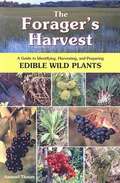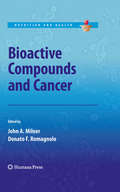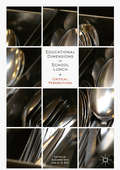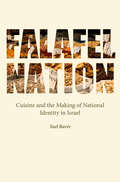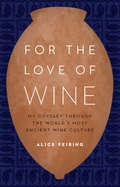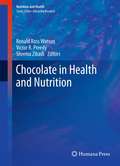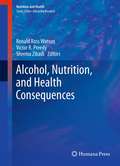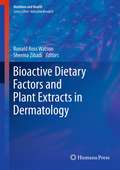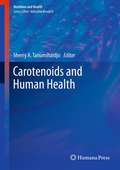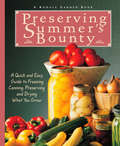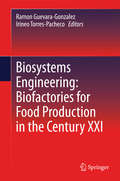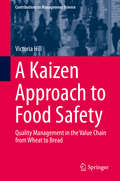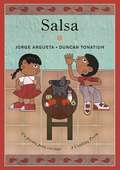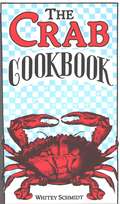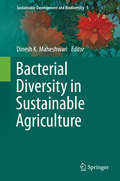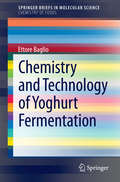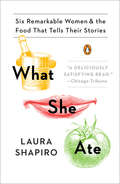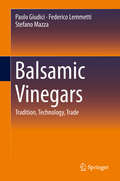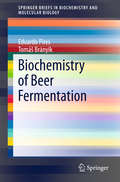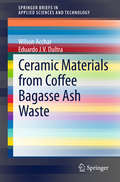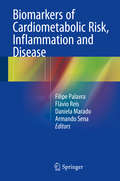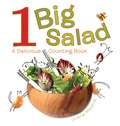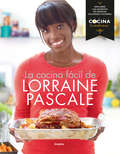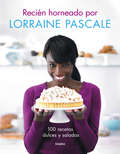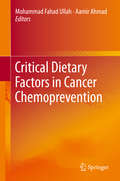- Table View
- List View
The Forager's Harvest: A Guide To Identifying, Harvesting, And Preparing Edible Wild Plants
by Samuel Thayer<P>Rather than cover hundreds of plants in abbreviated accounts like the typical field guide, the author has chosen a smaller selection of species to discuss in exhaustive detail, including only those plants he has eaten fifty times or more. <P>This book contains as many as ten high-quality color photographs of each plant.<P> These have been selected to facilitate identification and depict the plant parts at exactly the stage of growth in which they should be harvested.<P> The accompanying text is accurate and thorough, giving readers of any experience level the confidence to harvest wild plants for food. Botanically, the text is accurate, yet it remains accessible to the layperson by using technical terms only when necessary. <P>This book has many unique features that will appeal to naturalists, hikers, campers, survivalists, homesteaders, gardeners, chefs, Native Americans, and whole food enthusiasts.<P> It contains a calendar of harvest times for wild produce, a step-by-step protocol for positive identification, an illustrated glossary tailored to the needs of foragers, a recommended reading list, plus special sections on conservation, safety, nutrition, harvest techniques, preparation methods, and storage. While this is not a regional guide, it will prove most useful to readers in the eastern US and Canada, the Rocky Mountains, and the Pacific Northwest.
Bioactive Compounds and Cancer (Nutrition and Health)
by John A. Milner Donato F. RomagnoloBecause of the wealth of new information generated by the scientific community during the last decade on the role of nutrition on cancer risk, this book provides a forum for presentation and discussion of recent scientific data and highlights a set of dietary recommendations. Bioactive Compounds and Cancer presents chapters that highlight laboratory and clinical findings on how selected nutrients function as signaling molecules and, as such, influence cellular behavior and cancer predisposition. This important compendium focuses on understanding the role of nutrition in cancer biology, the molecular action of bioactive food components and xenobiotics on cancer risk, the role of dietary components in cancer prevention and/or treatment, and nutrition education with the most up to date dietary recommendations that may reduce cancer risk. This volume will be of interest to specialized health professionals, clinicians, nurses, basic and clinical researchers, graduate students, and health officials of public and private organizations.
Educational Dimensions of School Lunch: Critical Perspectives
by Suzanne Rice A. G. RudSchool lunch is often regarded as a necessary but inconvenient distraction from the real work of education. Lunch, in this view, is about providing students the nourishment they need in order to attend to academic content and the tests that assess whether content has been learned. In contrast, the central purpose of this collection is to examine school lunch as an educational phenomenon in its own right. Contributing authors—drawing from a variety of disciplinary traditions, including philosophy, sociology, and anthropology—examine school lunch policies and practices, social and cultural aspects of food and eating, and the relation among school food, the environment, and human and non-human animal well-being. The volume also addresses how school lunch might be more widely conceptualized and practiced as an educational undertaking.
Falafel Nation: Cuisine and the Making of National Identity in Israel (Studies of Jews in Society)
by Yael RavivWhen people discuss food in Israel, their debates ask politically charged questions: Who has the right to falafel? Whose hummus is better? But Yael Raviv’s Falafel Nation moves beyond the simply territorial to divulge the role food plays in the Jewish nation. She ponders the power struggles, moral dilemmas, and religious and ideological affiliations of the different ethnic groups that make up the “Jewish State” and how they relate to the gastronomy of the region. How do we interpret the recent upsurge in the Israeli culinary scene—the transition from ideological asceticism to the current deluge of fine restaurants, gourmet stores, and related publications and media? <p><p> Focusing on the period between the 1905 immigration wave and the Six-Day War in 1967, Raviv explores foodways from the field, factory, market, and kitchen to the table. She incorporates the role of women, ethnic groups, and different generations into the story of Zionism and offers new assertions from a secular-foodie perspective on the relationship between Jewish religion and Jewish nationalism. A study of the changes in food practices and in attitudes toward food and cooking, Falafel Nation explains how the change in the relationship between Israelis and their food mirrors the search for a definition of modern Jewish nationalism.
For the Love of Wine: My Odyssey through the World's Most Ancient Wine Culture
by Alice FeiringIn 2011 when Alice Feiring first arrived in Georgia, she felt as if she’d emerged from the magic wardrobe into a world filled with mythical characters making exotic and delicious wine with the low-tech methods of centuries past. She was smitten, and she wasn’t alone. This country on the Black Sea has an unusual effect on people; the most passionate rip off their clothes and drink wines out of horns while the cold-hearted well up with tears and make emotional toasts. Visiting winemakers fall under Georgia’s spell and bring home qvevris (clay fermentation vessels) while rethinking their own techniques. <p><p> But, as in any good fairy tale, Feiring sensed that danger rode shotgun with the magic. With acclaim and growing international interest come threats in the guise of new wine consultants aimed at making wines more commercial. So Feiring fought back in the only way she knew how: by celebrating Georgia and the men and women who make the wines she loves most, those made naturally with organic viticulture, minimal intervention, and no additives. From Tbilisi to Batumi, Feiring meets winemakers, bishops, farmers, artists, and silk spinners. She feasts, toasts, and collects recipes. She encounters the thriving qvevri craftspeople of the countryside, wild grape hunters, and even Stalin’s last winemaker while plumbing the depths of this tiny country’s love for its wines. <p> For the Love of Wine is Feiring’s emotional tale of a remarkable country and people who have survived religious wars and Soviet occupation yet managed always to keep hold of their precious wine traditions. Embedded in the narrative is the hope that Georgia has the temerity to confront its latest threat—modernization.
Chocolate in Health and Nutrition (Nutrition and Health)
by Victor R. Preedy Ronald Ross Watson Sherma ZibadiChocolate in Health and Nutrition represents the first comprehensive compilation of the newest data on the actions of the flavonoids and microorganisms associated with the beneficial effects of chocolate. This unique text provides practical, data-driven resources based upon the totality of the evidence to help the reader understand the basics, treatments and preventive strategies that are involved in the understanding of the role chocolate may play in healthy individuals as well as those with cardiovascular disease, diabetes or neurocognitive declines. Of equal importance, critical issues that involve patient concerns, such as dental caries and food preferences in children, potential effects on weight gain, addiction and withdrawal are included in well-referenced, informative chapters. The latest research on the role of chocolate in normal health areas including mood, pain and weight management, cardiovascular disease and related conditions are presented. Chocolate in Health and Nutrition provides health professionals in many areas of research and practice with the most up-to-date, well referenced and comprehensive volume on the current state of the science and medical uses of chocolate.
Alcohol, Nutrition, and Health Consequences (Nutrition and Health)
by Victor R. Preedy Ronald Ross Watson Sherma ZibadiChronic alcohol use is associated with heart, liver, brain, and other organ pathology. Alcohol is a drug of abuse and a caloric food and it causes poor intake and absorption of nutrients, thus playing a major role in many aspects of clinical consequences. Alcohol use lowers consumption of fruit and vegetables, lowers tissue nutrients, and, in some cases, requires nutritional therapy by clinicians. Alcohol, Nutrition, and Health Consequences will help the clinician define the causes and types of nutritional changes due to alcohol use and also explain how nutrition can be used to ameliorate its consequences. Chapters present the application of current nutritional knowledge by physicians and dietitians. Specific areas involving alcohol-related damage due to nutritional changes are reviewed, including heart disease, obesity, digestive tract cancers, lactation, brain function, and liver disease. In addition, alcohol's effects on absorption of minerals and nutrients, a key role in causing damage are treated. The importance of diet in modifying alcohol and its metabolite damage is also explained. Alcohol, Nutrition, and Health Consequences is essential reading for alcohol therapists and researchers as well as primary care physicians and dietitians and is an easy reference to help the clinician, student, and dietitian comprehend the complex changes caused by direct and indirect effects of ethanol at the cellular level via its nutritional modification.
Bioactive Dietary Factors and Plant Extracts in Dermatology (Nutrition and Health)
by Ronald Ross Watson Sherma ZibadiThe role of Bioactive Dietary Factors and Plant Extracts in Preventive Dermatology provides current and concise scientific appraisal of the efficacy of foods, nutrients, herbs, and dietary supplements in preventing dermal damage and cancer as well as improving skin health. This important new volume reviews and presents new hypotheses and conclusions on the effects of different bioactive foods and their components derived particularly from vegetables, fruits, and herbs. Primary emphasis is on treatment and prevention of dermal damage focusing on skin cancers with significant health care costs and mortality. Bioactive Dietary Factors and Plant Extracts in Preventive Dermatology brings together expert clinicians and researchers working on the different aspects of supplementation, foods, and plant extracts and nutrition and skin health. Their expertise provides the most current knowledge in the field and will serve as the foundation for advancing future research.
Carotenoids and Human Health (Nutrition and Health)
by Sherry A. TanumihardjoCarotenoids and Human Health provides an introduction to food sources and metabolism. Written by experts in their fields and including the most up-to-date information, this volume serves as an in-depth guide to studies that have been performed in humans and observations that have been made in population level assessments. Special emphasis is given to associations with disease, as well as the importance of carotenoids internationally, specifically as a source of vitamin A for the world. Comprehensive and easy to use, Carotenoids and Human Health is a very useful resource for nutritionists, registered dieticians, medical students, and graduate students.
Preserving Summer's Bounty: A Quick And Easy Guide To Freezing, Canning, Preserving, And Drying What You Gro w (Rodale Garden Book Ser.)
by Susan McClure Rodale Food CenterWhen your harvest comes in, turn to Preserving Summer's Bounty for all the answers about what to do with more than 100 fruits and vegetables. Master preserving processes and techniques, including canning, drying, freezing, pickling, juicing, and storing, with easy-to-follow explanations and more than 200 recipes.
Biosystems Engineering: Biofactories For Food Production In The Century Xxi (Advances In Biochemical Engineering & Biotechnology Ser. #Vol. 139)
by Ramon Guevara-Gonzalez Irineo Torres-PachecoThis book presents new food production systems (for plants and animals) involving agrochemicals that increase in a controlled manner the bioactives content, under greenhouse conditions. Moreover, conception and design of new instrumentation for precision agriculture and aquiculture contributing in food production is also highlighted in this book.
A Kaizen Approach to Food Safety: Quality Management in the Value Chain from Wheat to Bread (Contributions to Management Science)
by Victoria HillThis book provides a Management Science approach to quality management in food production. Aspects of food quality, product conformance and reliability/food safety are examined, starting with wheat and ending with its value chain transformation into bread. Protein qualities that influence glycemic index levels in bread are used to compare the value chains of France and the US. With Kaizen models the book shows how changes in these characteristics are the result of management decisions made by the wheat growers in response to government policy and industry strategy. Lately, it provides step-by-step instructions on how to apply kaizen methodology and Deming's work on quality improvement to make the HACCPs (Hazard Analysis and Critical Control Points) in food safety systems more robust.
Salsa: Un poema para cocinar / A Cooking Poem
by Jorge Argueta Duncan Tonatiuh Elisa AmadoIn my house there is a stone bowl. It's black as the night and stands on three little feet.
The Crab Cookbook
by Whitey SchmidtFrom the author of the best-selling The Official Crab Eater’s Guide and A Guide to Chesapeake Seafood Dining/ Bayside Views to Dine By, comes The Crab Cookbook, a wonderful collection of hundreds of delicious and elegant ways to prepare crab. There are recipes for every variety of crab you may want to serve, from the popular blue crab, stone crab claws, Dungeness crab, to Alaskan king crab legs. The impressive array of memorable meals features entrees from formal grilled dinners to casual summer fare. Specialty dishes include: Crunchy crab nuggets; New Orleans crab; spread; Baltimore crab soup; G.W.’s she crab soup; Crab meat and cantaloupe salad; Chesapeake Bay crab salad; Maryland crab cakes; Oyster House Road crab cakes; Deale deviled crab; Northern Neck stuffed crab; Soft shell crabs with tarragon sauce; Spicy stuffed soft shell crab; Miles River crab imperial; Choptank crab fritters; Sizzling Dungeness crab legs.
Bacterial Diversity in Sustainable Agriculture (Sustainable Development and Biodiversity #1)
by Dinesh K. MaheshwariThe earth's biodiversity is a degree of ecosystem health which is vital to ecology and environmental sustainability. The microbial world is the largest unexplored reservoir. The agro-ecosystem enriched with rhizosphere implicit abundant and species-rich component of microbial diversity. Its global exploration designs a worldwide framework for agricultural sustainability adjoining benefits in its conservation. Agricultural sustainability requires a major share from ecosystem management which is better paid by microbial diversity and conservation. Diversity of bacteria influences plant productivity providing nutrient convenience from soil instead altering per se community and diversity in the rhizosphere where they may influence mechanistic competent and antagonistic micro-flora. The potential species among the diversity are therefore, essential subjective to their maintenance for use around the globe. Microbial population in agro-ecosystem is influenced by stresses, reduce functionality as a component. It is therefore, important to explore secrets of planned strategy so as to unravel the microbial diversity and conservation in agricultural development. Microorganisms are minute, pervasive in nature and alleged as disease host instead tiny recognize as employee of agro-ecosystem, indulge in agricultural development and potential contributor in world of ecological and economical wealth creation. This step pertinently would help to launch scientific motivation needed to support the refrain of microbial diversity and conservation.
Chemistry and Technology of Yoghurt Fermentation (SpringerBriefs in Molecular Science)
by Ettore BaglioThis Brief reviews the chemistry behind the production of yoghurt through acidification of milk. It quantifies the changes in physical and chemical properties of yoghurt during fermentation with microbial organisms (such as Lactobacillus bulgaricus and Streptococcus thermophilus). It has been found that this symbiosis has an optimal development at a temperature of ca. 45°C with the transformation of lactose into lactic acid and small amounts of acetaldehyde, diacetyl and volatile acids. This Brief explains the chemical and physical results of the fermentation process, such as precipitation of proteins and the acid coagulation of milk with a clot formation in the final semi-solid mass. The Brief sheds light on the accomplishments of the fermenting organisms: they are responsible for the biochemical reactions of carbohydrate metabolism, proteolysis, lipolysis and flavour production in the process of yoghurt production. It also briefly reviews formulations and food additives used in the modern yoghurt producing industry.
What She Ate: Six Remarkable Women and the Food That Tells Their Stories
by Laura Shapiro"A collection of deft portraits in which food supplies an added facet to the whole.”—Slate“Mouthwatering.”—Eater.com A beloved culinary historian’s short takes on six famous women through the lens of food and cooking—what they ate and how their attitudes toward food offer surprising new insights into their lives.Everyone eats, and food touches on every aspect of our lives—social and cultural, personal and political. Yet most biographers pay little attention to people’s attitudes toward food, as if the great and notable never bothered to think about what was on the plate in front of them. Once we ask how somebody relates to food, we find a whole world of different and provocative ways to understand her. Food stories can be as intimate and revealing as stories of love, work, or coming-of-age. Each of the six women in this entertaining group portrait was famous in her time, and most are still famous in ours; but until now, nobody has told their lives from the point of view of the kitchen and the table. It’s a lively and unpredictable array of women; what they have in common with one another (and us) is a powerful relationship with food. They include Dorothy Wordsworth, whose food story transforms our picture of the life she shared with her famous poet brother; Rosa Lewis, the Edwardian-era Cockney caterer who cooked her way up the social ladder; Eleanor Roosevelt, First Lady and rigorous protector of the worst cook in White House history; Eva Braun, Hitler’s mistress, who challenges our warm associations of food, family, and table; Barbara Pym, whose witty books upend a host of stereotypes about postwar British cuisine; and Helen Gurley Brown, the editor of Cosmopolitan, whose commitment to “having it all” meant having almost nothing on the plate except a supersized portion of diet gelatin.
Balsamic Vinegars: Tradition, Technology, Trade
by Paolo Giudici Federico Lemmetti Stefano MazzaThis book offers a clear description of all the balsamic vinegars and/or similar products produced in the world, their differences in composition, quality and use. This encompasses all the steps for the production of Traditional Balsamic Vinegar: grape composition, crushing, concentration of the must, alcoholic and acetic fermentation, ageing, sensorial properties and quality of the final product. This book covers extensively all the balsamic vinegars, especially the industrial ones that have a really large market and diffusion.
Biochemistry of Beer Fermentation (SpringerBriefs in Biochemistry and Molecular Biology)
by Eduardo Pires Tomáš BrányikBeer is the most popular alcoholic beverage in the world. Yet, behind each glass of beer there is an enormous amount of work invested. If the first image that comes to your mind is the lifting of heavy bags of malt or carrying kegs, guess again! Most of the work involved in brewing is carried out by "microworkers" - yeast and their enzymes! These special helpers are responsible for catalyzing the vast majority of the biochemical reactions occurring in all steps that gradually transform the sugary wort into beer. This book not only provides readers with an overview of the whole biochemical process involved in beer fermentation, but also reviews the latest findings in this delightful field, making it essential reading for both scientists and brewing enthusiasts
Ceramic Materials from Coffee Bagasse Ash Waste (SpringerBriefs in Applied Sciences and Technology)
by Wilson Acchar Eduardo J. V. DultraThis book proposes the use of coffee bagasse ash (CBA) waste as raw material to be used in ceramic formulations. The approach presented here is a solution to a current ambiental problem as CBA waste is discharged in high amounts in agriculture. The authors analyze the potencial of CBA as a material to substitute feldspar in tile production.
Biomarkers of Cardiometabolic Risk, Inflammation and Disease
by Filipe Palavra Flávio Reis Daniela Marado Armando SenaThis book discusses recent advances in the area of cardiometabolic risk biomarkers of chronic inflammatory and cardiovascular disorders. Tackling the topic in a systematic manner, the book starts with an introduction to cardiometabolic risk and its clinical relevance, comparing emergent and classical biomarkers. It then goes on to discuss cardiometabolic risk biomarkers in a range of diseases, including diabetes, ischemic stroke and neurodegenerative disorders. Biomarkers of Cardiometabolic Risk, Inflammation and Disease is aimed at doctors specializing in internal medicine, neurology, cardiology, rheumatology, nephrology or endocrinology and will also be of interest to GPs, trainee doctors and clinical and basic researchers working on cardiovascular and autoimmune disorders.
1 Big Salad: A Delicious Counting Book
by Juana Medina<p>Juana Medina's ingenious illustrations nearly pop off the page in her new counting book, ONE BIG SALAD. One avocado deer saunters across the spread, two radish mice scurry by, until finally ten clementine kitties prance onto the scene - all of the ingredients in one big salad! <p>Medina's previous book with Viking, SMICK!, introduced her to the children's book world, and now she's bringing her fresh and innovative take on the concept book form.</p>
La cocina fácil de Lorraine Pascale
by Lorraine Pascale100 recetas fabulosas y fáciles de preparar de la mano de Lorraine Pascale. La cocina fácil de Lorraine Pascale es el libro que sus muchos fans estaban esperando. Con un estilo elegante y desenfadado, nos presenta platos divertidos y asequibles para cada ocasión, lejos de la complicación y de la elaboración excesiva. Así, nos ofrece una receta clásica de la vieja escuela con un toque personal, como su paella «a mi manera». O, para un rápido tentempié, su receta de pasta cremosa con panceta, champiñones y parmesano o una de sus muchas delicias vegetarianas como las barritas de cereales top fashion, el pan de maíz con cebolleta y chile rojo o el risotto de setas, castañas y guisantes con aceite de trufa. La noche del viernes con amigos podría estar aderezada con los jarretes de cordero braseados al rioja con chorizo y ajo o con el pollo al estilo Kiev, que se pueden preparar de antemano y hornearse mientras llegan los demás. Y, por supuesto, no hay que olvidar el impecable gusto de Lorraine por las recetas de postres tradicionales, como su sorprendente tarta de chocolate sin harina, sus muffins de frambuesa con azúcar moreno o su tarta grafiti. Con fotografías de casi todas las recetas, consejos y trucos que facilitan la preparación y el mejor resultado, cada página rebosa inspiración culinaria. Los fans de Canal Cocina recomiendan a Lorraine Pascale:«¡Me encanta! Lo hace tan fácil que parece sencillo.» «Sus recetas son estupendas y fáciles de hacer.» «¡Me he vuelto adicta a su programa! Sus recetas son riquísimas y hace que todo parezca sencillo.»
Recién horneado por Lorraine Pascale: 100 recetas dulces y saladas
by Lorraine PascaleMi libro contiene cien de mis recetas favoritas e incluye tanto elaboraciones dulces como saladas que te servirán para cada día de la semana.Así que, despliega el delantal, apaga el teléfono, cierra firmemente la puerta de la cocina y sube el volumen de la música... ¡Porque ahora lo único que importa es hornear!
Critical Dietary Factors in Cancer Chemoprevention
by Aamir Ahmad Mohammad Fahad UllahThis book focuses on the prophylactic potential of diet-derived factors in primary prevention of cancer. It is written by a group of highly reputed experts in the area of dietary agents and cancer chemoprevention. The translational potential of dietary factors from epidemiological, laboratory and clinical studies as prevention strategy in normal and risk populations is highlighted. The work presents options of routine inclusion of specific dietary regimens for prevention as well as therapeutic strategy for better management through adjuvant interventions in cancer treatment.
